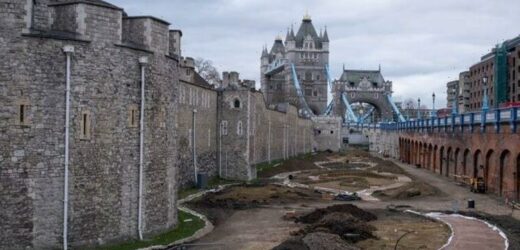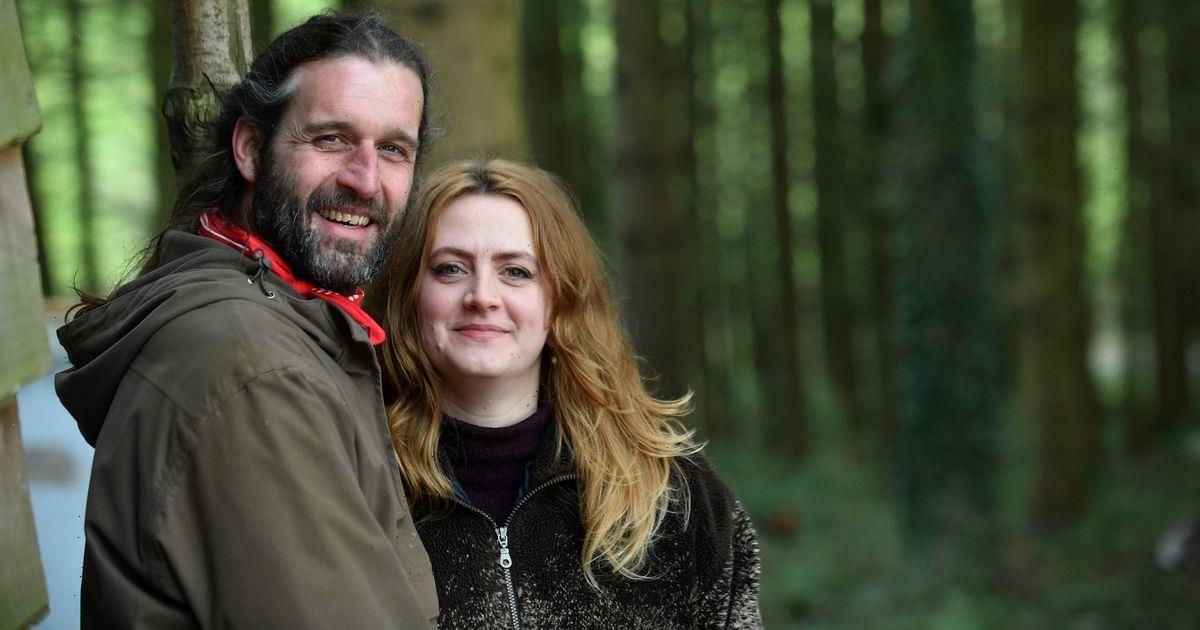Archaeologists use 3D modelling to identify 'unusual' statue
We use your sign-up to provide content in ways you’ve consented to and to improve our understanding of you. This may include adverts from us and 3rd parties based on our understanding. You can unsubscribe at any time. More info
As part of the Queen’s Platinum Jubilee, a 13th-century moat at the historic site is being transformed into a wildflower meadow. This has led to the discovery of numerous incredible artefacts from various periods of history. Among these treasures lie a World War 1 training round, a historical French coin and a French jetton from the 15th century.
Archaeologists also found a late medieval or Tudor buckle, which they believe is likely to have come from a dagger belt.
Also found is a 17th-century half penny trade token, which could have been made at the Tower’s Royal Mint.
The stunning finds have shined a new light on the complex history of the Tower of London, a 14,000 square metre moat.
In its history, it has been used as a medieval orchard, a grazing ground for Victorian livestock and allotments during World War 2.


The Tower of London has played a prominent role in English history, as controlling it was once considered important to running the country.
In its history, It was besieged several times, and the Tower has served variously as an armoury, a treasury, a menagerie, the home of the Royal Mint, a public record office, and the home of the Crown Jewels of England.
To celebrate Her Majesty’s 70-year reign, 20 million seeds will be planted in the moat as part of the Superbloom project during the spring.
The moat will be home to cornflowers, sunflowers, gypsophila, poppies and pink cosmos, with other garden plants added to the native wildflowers to allow for taller planting schemes and colourful displays throughout the summer.

Alfred Hawkins, the building’s curator at Historic Royal Palaces, the charity which cares for the Tower of London, said: “The moat has a very long and complicated history of over 700 years.
“It’s a defensive structure, and then it is drained and used as a training ground or for parades.
“The scale of things that we’re finding is reflective of that complicated story.”
The World War 1 training round serves as a reminder of the time that the fortress was used as a focal point of combat from 1914 to 1918.
DON’T MISS:
Wuhan lab horror as China’s ‘dangerous’ Covid experiments exposed [REVEAL]
EU in major rebellion over Putin – two countries break ranks [INSIGHT]
UK flooding: How British landmarks will look after sea levels rise [ANALYSIS]


Here, soldiers were garrisoned, awaiting deployment at the beginning of the war and trained to use guns, while weapons were kept in storehouses within the Tower.
One of the most well-known purposes of the Tower was as a grim, forbidding prison during the 16th century.
The jetton, which experts believe was made in Paris, was inscribed with the fleur-de-lis.
For archaeologists, this was a particularly rare find as it demonstrates the importance of the Tower of London as a focal point of international travel.
Tom O’Leary, public engagement director at Historic Royal Palaces, said: “We hope that this thriving new landscape, surrounding London’s formidable fortress, will celebrate the power of nature to unite us all.”
Source: Read Full Article


